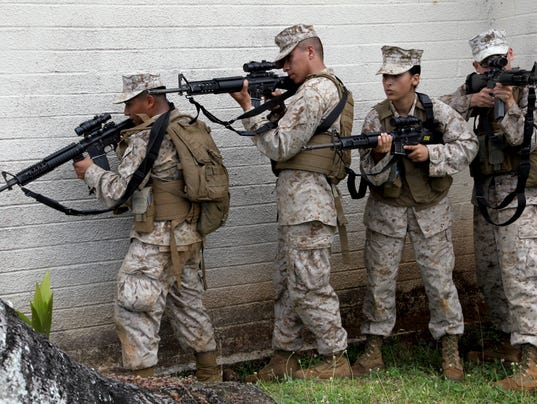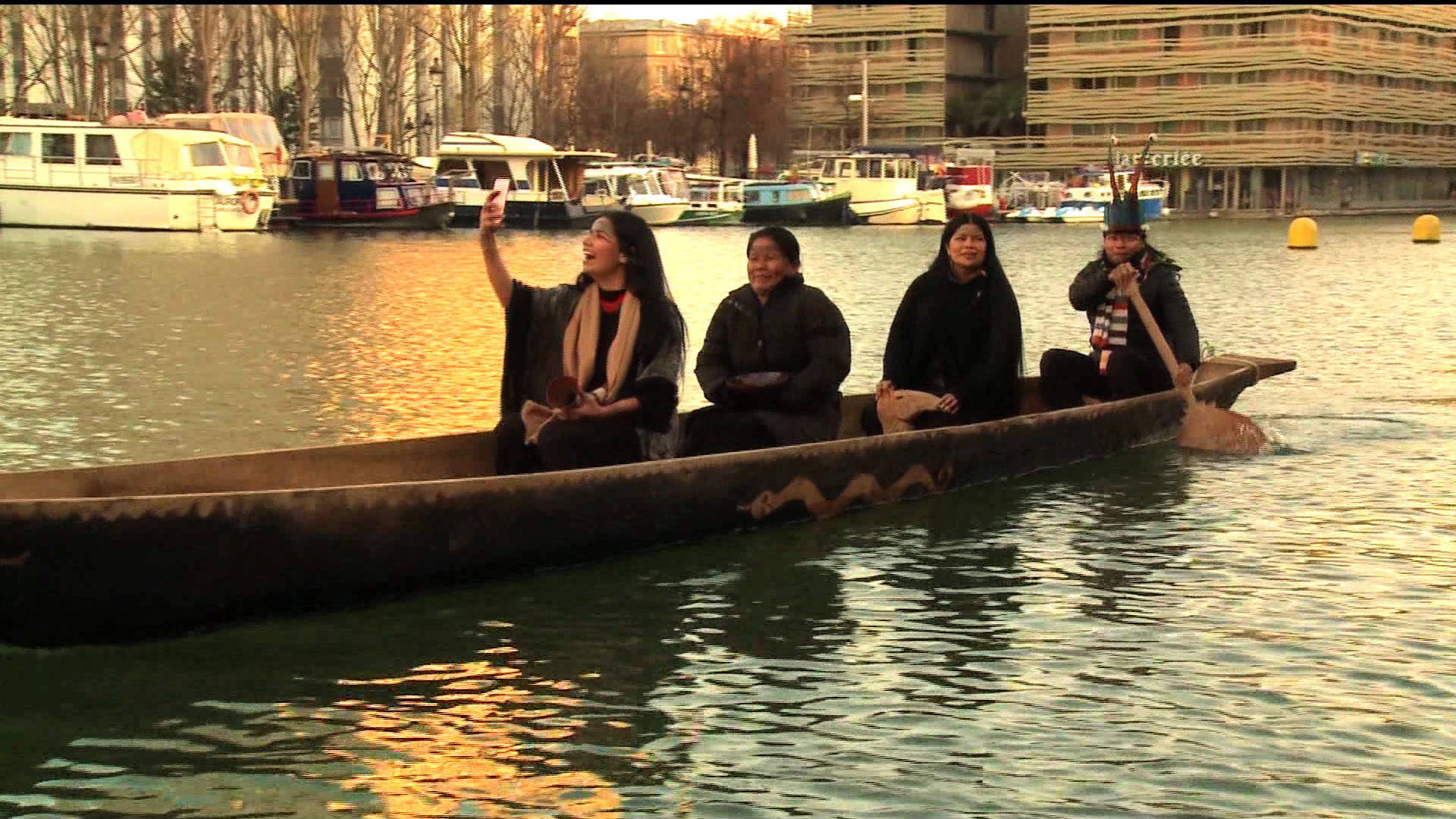On Tuesday, as the sun rose in Paris, a delegation of
indigenous people from Sarayaku, in the Ecuadorean Amazon, set out in a
handmade, wooden canoe along the Villette Canal. The Kichwa people of Sarayaku
have been fighting oil exploitation on their lands for many years; in 2012 they
won a case at the Inter-American Court of Human Rights against the Ecuadorean
government for permitting oil drilling on their land. Democracy Now!'s Juan
Carlos Dávila and Amy Littlefield were there as the Sarayaku launched their
canoe after its 6,000-mile journey from the Amazon. "Those who are
actually negotiating right now, they might not have to live with the
consequences of climate change, but I will," Nina Gualinga, a Kichwa
activist from Sarayaku, says of the COP21 negotiations. "Who are they to
decide over my future, over my sister's future, over my children’s
future?"
TRANSCRIPT
This is a rush transcript. Copy may not be in its final
form.
AMY GOODMAN: We wrap up our broadcast with
an action earlier this week. On Tuesday, as the sun rose in Paris, a delegation
of indigenous people from Sarayaku, in the Ecuadorean Amazon, set out in a
handmade, wooden canoe along the Villette Canal. The Kichwa people of Sarayaku
have been fighting oil exploitation on their lands for many years. In 2012,
they won a case at the Inter-American Court of Human Rights against the
Ecuadorean government for letting an Argentine oil company explore for oil on
their land. This is the piece.
JOSÉ GUALINGA: [translated] For the first
time in history, a canoe, that we call the "Canoe of Life," named
after the hummingbird fish in our territory, a canoe from Sarayaku, from the
Ecuadorean Amazon, has arrived here to Paris, France.
NINA GUALINGA: My name is Nina Gualinga,
and I am here with a delegation from Sarayaku. And Sarayaku is situated in the
Ecuadorean Amazon. And we have brought a canoe all the way to Paris, here to
the COP, with a message of peace, of hope, and a proposal called Kawsak
Sacha. That means "The Living Forest." And it is a proposal to make
sure that nature’s rights are being respected, indigenous peoples’ rights are
being respected, and also a way to combat climate change.
The whole community has been involved, pretty much. There’s
one person who shapes the canoe, and then there are others also helping to burn
it and things like that. And then you make like a big party. You gather all of
your friends and family and community members to drag the canoe all the way
from the mountain down to the river. We had to take it all the way to the
nearest port, which is in Canelos, by canoe, so that took, I think, a day or
so. And then, from Puyo, we had to take it to the capital of Ecuador, Quito,
and then from Quito, on a plane—or from Guayaquil, maybe, to Paris. But first,
it got stuck in Ecuador because of troubles with the flight, I think. And then
it got stuck in customs here in Paris. So, it’s been quite hard to get it all
the way here.
AMY LITTLEFIELD: Could you talk about the
negotiations here at the COP? And do you feel your voice is being heard
inside the summit?
NINA GUALINGA: I think that indigenous
peoples’ voices are the voices that should be heard. Indigenous people should
be inside the actual negotiations, but we are not. Those who are actually
negotiating right now, they might not have to live with the consequences of
climate change, but I will. I will have to live with it. My sister, my little
brother and my children, they’re all going to have to live with the consequences
of climate change. And who are they to decide over my future, over my sister’s
future, over my children’s future?
AMY GOODMAN: Nina Gualinga of the Sarayaku
of the Ecuadorean Amazon, speaking to
Democracy Now!'s Amy
[Littlefield]. Special thanks to Mike Burke and to Carla Wills, to Nermeen
Shaikh and to Deena Guzder, to Denis Moynihan. I'm Amy Goodman. This is
Democracy
Now! I’ll be speaking tonight at 9:00 at The Place to B here in
Paris.





